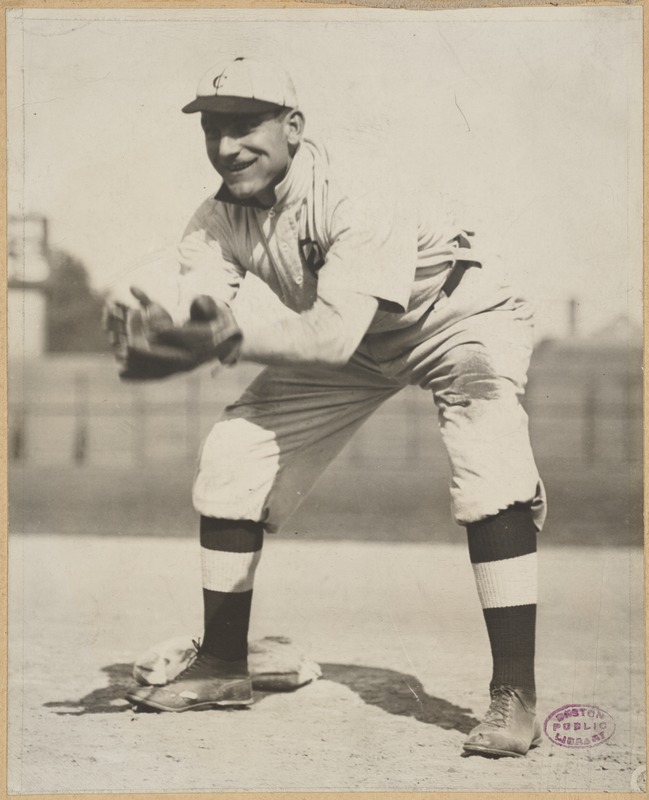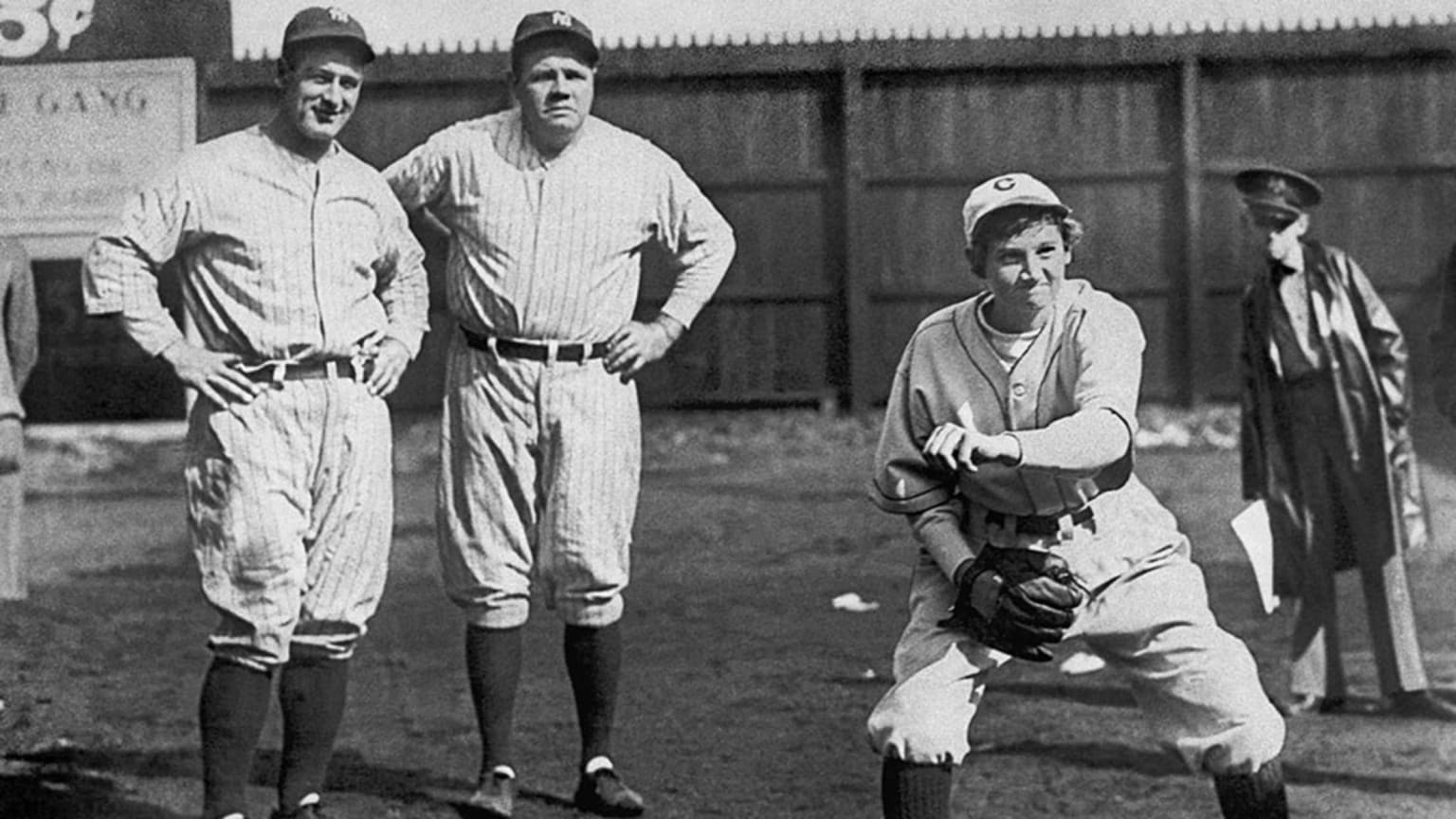
Nap Lajoie
Nap Lajoie was one of the early stars of Major League Baseball and is often regarded as one of the best all-around players of his era. His MLB career spanned from the late 19th century into the early 20th century, during a time when the game was evolving rapidly, transitioning from the so-called “dead-ball era” to a more modern style of play. Lajoie was known for his exceptional batting skills, defense, and base-running, and his influence on the game is still felt today.
Napoleon “Nap” Lajoie was born on September 5, 1874, in Woonsocket, Rhode Island, to French-Canadian parents. He grew up in a working-class neighborhood and developed a love for baseball at a young age. Lajoie’s early interest in the game was fostered by his father, who was also a baseball enthusiast. His mother was supportive of his sporting endeavors, though she was more cautious about his involvement in professional sports due to the uncertainty and challenges of the career.

From an early age, Lajoie was a gifted athlete. He attended high school in Rhode Island, where he excelled in both baseball and football. However, it was baseball that captured his attention. His performance on local baseball teams was impressive, and by 1896, at the age of 22, Lajoie was ready to take the next step in his career. His first taste of professional baseball came when he signed with the Worcester (Massachusetts) team in the Eastern League, where he played for one season. His performance was remarkable enough to attract the attention of Major League Baseball scouts.
In 1897, at the age of 23, Lajoie was called up to the National League’s Philadelphia Phillies. He made an immediate impact, displaying his hitting prowess and defensive ability. As a rookie, Lajoie batted .333 in 92 games, showcasing the skills that would become his trademark throughout his career. His strong start with the Phillies set the stage for a career that would be defined by consistency and dominance at the plate.
Over the next few years, Lajoie developed a reputation as one of the most feared hitters in the game. His ability to make consistent contact with the ball and his exceptional batting eye were key components of his success. Lajoie also demonstrated excellent speed on the base paths, becoming one of the top base stealers in the league during his prime.
Lajoie’s statistical achievements are a testament to his greatness as a player. His career spanned 21 seasons, from 1896 to 1916, during which he accumulated impressive numbers. Here are some of his notable statistics:
Lajoie’s statistical achievements are a testament to his greatness as a player. His career spanned 21 seasons, from 1896 to 1916, during which he accumulated impressive numbers. He finished his career with a remarkable .338 batting average, which ranks among the highest in MLB history. His ability to consistently hit for average was a key factor in his longevity and success as a hitter. Over the course of his career, Lajoie accumulated 3,242 hits, ranking him among the top players of his era. He scored 1,524 runs, showcasing his ability to get on base and contribute to his team’s offensive production. Lajoie recorded 1,599 RBIs, further emphasizing his ability to drive in runs. Additionally, he was also an accomplished base runner, finishing with 380 stolen bases. Lajoie won five batting titles during his career (1901, 1903, 1904, 1905, and 1910), which speaks to his consistency as one of the premier hitters of his time. His career on-base percentage was .384, demonstrating his ability to get on base and set the table for his teammates. Lajoie’s batting achievements were all the more impressive considering the dead-ball era in which he played. The lack of a lively baseball and the emphasis on pitching and defense meant that hitters often had to work harder to generate offensive production. Lajoie’s ability to hit for average, steal bases, and contribute to his team’s overall offensive output made him one of the most valuable players in the league.

Lajoie’s prime years came between 1901 and 1910, a period when he was widely regarded as one of the best all-around players in baseball. In 1901, he moved to the newly formed American League, where he played for the Cleveland Indians (then called the Cleveland Naps). Lajoie’s arrival in Cleveland coincided with the team’s rise to prominence, and he quickly became the face of the franchise.
During the 1901 season, Lajoie posted a staggering .426 batting average, which remains one of the highest single-season averages in MLB history. His performance that year helped him win the American League batting title and solidified his status as one of the best hitters in the game. This performance was particularly impressive considering the pitching-heavy nature of the time and the fact that Lajoie was facing some of the best pitchers of the era.
Lajoie’s success continued throughout the first decade of the 20th century. He was a key contributor to the Cleveland Indians’ offensive attack and was often mentioned in the same breath as other great players of the time, such as Ty Cobb, Honus Wagner, and Tris Speaker. Lajoie’s ability to hit for both average and power, coupled with his base-running prowess, made him a complete player.
One of the most memorable seasons of Lajoie’s career came in 1910 when he won his fifth batting title with a .384 average. This performance came at a time when pitchers like Walter Johnson and Ed Walsh were dominating the league, making Lajoie’s achievement all the more impressive. His consistency at the plate was unmatched during this time, and he remained a key player for the Indians until the end of his career.

Throughout his career, Lajoie was known for his hard-nosed style of play and his competitive spirit. One memorable moment occurred during the 1910 season when he found himself in a heated rivalry with fellow American League star Ty Cobb. The two players were known for their intense competition, and their battles on the field were legendary.
During one game in 1910, Lajoie and Cobb were involved in a controversial play at second base. Cobb, known for his aggressive base-running, attempted to slide into second base to break up a double play. Lajoie, however, was able to tag him out, leading to a heated exchange between the two players. While their rivalry was often contentious, it also highlighted the passion and intensity with which Lajoie approached the game.
Another memorable moment from Lajoie’s career came in 1914 when he was called upon to help the Cleveland Indians in a critical game. Lajoie, at the age of 40, was no longer the dynamic player he had once been, but he was still capable of performing in clutch situations. In a game against the Philadelphia Athletics, Lajoie drove in a key run with a single, helping his team to a crucial victory. This moment demonstrated that even in the twilight of his career, Lajoie was still capable of making a significant impact.
Nap Lajoie’s impact on the game of baseball was far-reaching. He was one of the pioneers of the modern game, and his contributions helped shape the way baseball is played today. Lajoie’s batting skills, base-running ability, and defensive prowess set a high standard for future generations of players. His dominance in the dead-ball era was especially significant because it demonstrated that a player could excel even in a time when offense was limited.
Lajoie’s success also played a role in the development of the American League. As one of the league’s first major stars, Lajoie helped establish the American League as a legitimate competitor to the established National League. His move to Cleveland was a key moment in the team’s history, and his presence helped elevate the Indians to new heights.

Additionally, Lajoie’s success as a hitter influenced the way future generations of players approached batting. His emphasis on contact hitting and his ability to make consistent contact with the ball helped lay the foundation for the modern emphasis on batting for average and getting on base. Lajoie’s skills were also a precursor to the more advanced base-running strategies that would emerge in the years following his career.
Nap Lajoie’s career is a testament to the greatness of early 20th-century baseball. As one of the most consistent and dominant players of his time, Lajoie’s influence on the game was profound. His statistical achievements, memorable moments, and lasting impact on baseball make him a true legend of the sport. Lajoie’s career serves as a reminder of the rich history of Major League Baseball and the players who helped shape its development. Though his career is often overshadowed by the fame of later stars, Lajoie’s place in baseball history is secure, and his contributions to the game will always be remembered.
<





